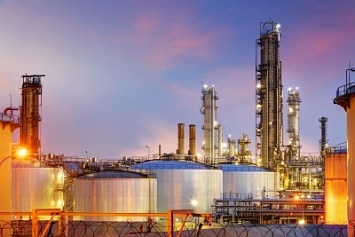The EPA released a final memorandum on “Guidance on Plantwide Applicability Limitation (PAL) Provisions Under the New Source Review (NSR) Regulations” on August 5, 2020.
 Long-established NSR regulations under the Clean Air Act (CAA) require new construction on potential emissions sources or major modification of existing emissions source facilities to undergo a “pre-construction permitting regime that requires facilities to install pollution control technology in certain instances,” according to the Environmental and Energy Law Program (EELP) at Harvard Law School.
Long-established NSR regulations under the Clean Air Act (CAA) require new construction on potential emissions sources or major modification of existing emissions source facilities to undergo a “pre-construction permitting regime that requires facilities to install pollution control technology in certain instances,” according to the Environmental and Energy Law Program (EELP) at Harvard Law School.
NSR regulations apply to a wide variety of facilities, including oil and gas, power plants, automobile manufacturing, paper mills, fertilizer manufacturing, cement plants, and plastics production.
The PAL provisions were created as part of the 2002 NSR Reform Rule. PALs provide a more flexible permitting path for specific pollutants by establishing plantwide emissions limits (in tons per year) for specific regulated NSR pollutants, according to the EPA.
“Once established, changes to facility operations that affect that pollutant can forego New Source Review (“NSR”), a costly and time-consuming process for industry,” according to Lexology. “The PAL provides a permittee the ability to manage process changes (modifications) without triggering major NSR and the need to conduct project-by-project major NSR applicability analyses.”
According to the EPA, the greater flexibility provided for in a PAL allows a more rapid response for emissions sources to address market changes with lesser permitting requirements and a greater regulatory certainty.
“PALs also serve air quality goals by creating an incentive for sources to control emissions more than might otherwise be required,” according to the EPA.
The EPA believes previous guidance regarding PALs caused confusion that “led to a relative low adoption rate in the 17 years PALs have been in existence,” according to Lexology.
“ … [F]rom industry’s prospective however, the process for obtaining a PAL is formidable, particularly because state permitting agencies have little or no experience with PALs and are reluctant to take the ‘leap of faith’ necessary to make PALs attractive to industry,” according to Lexology.
The memo intends to increase the use of PALs, which are potentially favorable to the industry, by improving understanding of PAL provisions by stakeholders, particularly nonpermittee stakeholders, including the general public, according to the EPA.
The EPA identified the following concerns about PALs:
- PAL permit reopening
- PAL expiration
- PAL renewal
- PAL termination
- Monitoring requirements for PALs
- Emissions factor adjustment
- Validation testing
- Missing monitoring data
- Baseline actual Emissions for replacement units
- General advantages of PALs and other considerations
Critics of PALs believe any changes that weaken the NSR program can have negative impacts nationwide.
“When EPA interprets the law more leniently, industry is allowed to undertake more construction projects that increase emissions without installing and operating emissions control technology,” according to the EELP. “This causes an increase in harmful pollutants in the air around the facilities, meaning dirtier air in nearby communities, with negative effects on people’s health and the environment.”
